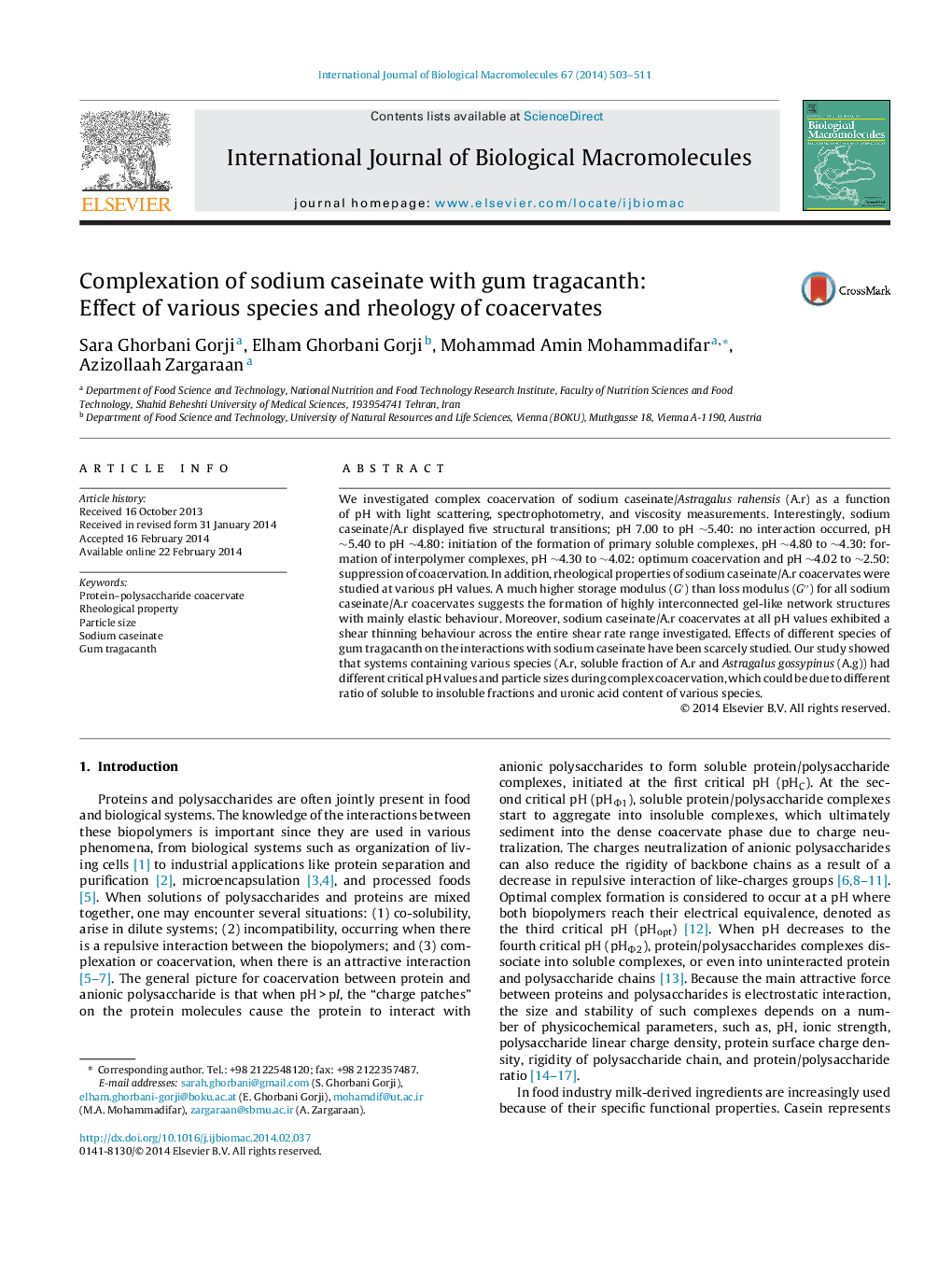| Article ID | Journal | Published Year | Pages | File Type |
|---|---|---|---|---|
| 8333240 | International Journal of Biological Macromolecules | 2014 | 9 Pages |
Abstract
We investigated complex coacervation of sodium caseinate/Astragalus rahensis (A.r) as a function of pH with light scattering, spectrophotometry, and viscosity measurements. Interestingly, sodium caseinate/A.r displayed five structural transitions; pH 7.00 to pH â¼5.40: no interaction occurred, pH â¼5.40 to pH â¼4.80: initiation of the formation of primary soluble complexes, pH â¼4.80 to â¼4.30: formation of interpolymer complexes, pH â¼4.30 to â¼4.02: optimum coacervation and pH â¼4.02 to â¼2.50: suppression of coacervation. In addition, rheological properties of sodium caseinate/A.r coacervates were studied at various pH values. A much higher storage modulus (Gâ²) than loss modulus (Gâ³) for all sodium caseinate/A.r coacervates suggests the formation of highly interconnected gel-like network structures with mainly elastic behaviour. Moreover, sodium caseinate/A.r coacervates at all pH values exhibited a shear thinning behaviour across the entire shear rate range investigated. Effects of different species of gum tragacanth on the interactions with sodium caseinate have been scarcely studied. Our study showed that systems containing various species (A.r, soluble fraction of A.r and Astragalus gossypinus (A.g)) had different critical pH values and particle sizes during complex coacervation, which could be due to different ratio of soluble to insoluble fractions and uronic acid content of various species.
Related Topics
Life Sciences
Biochemistry, Genetics and Molecular Biology
Biochemistry
Authors
Sara Ghorbani Gorji, Elham Ghorbani Gorji, Mohammad Amin Mohammadifar, Azizollaah Zargaraan,
